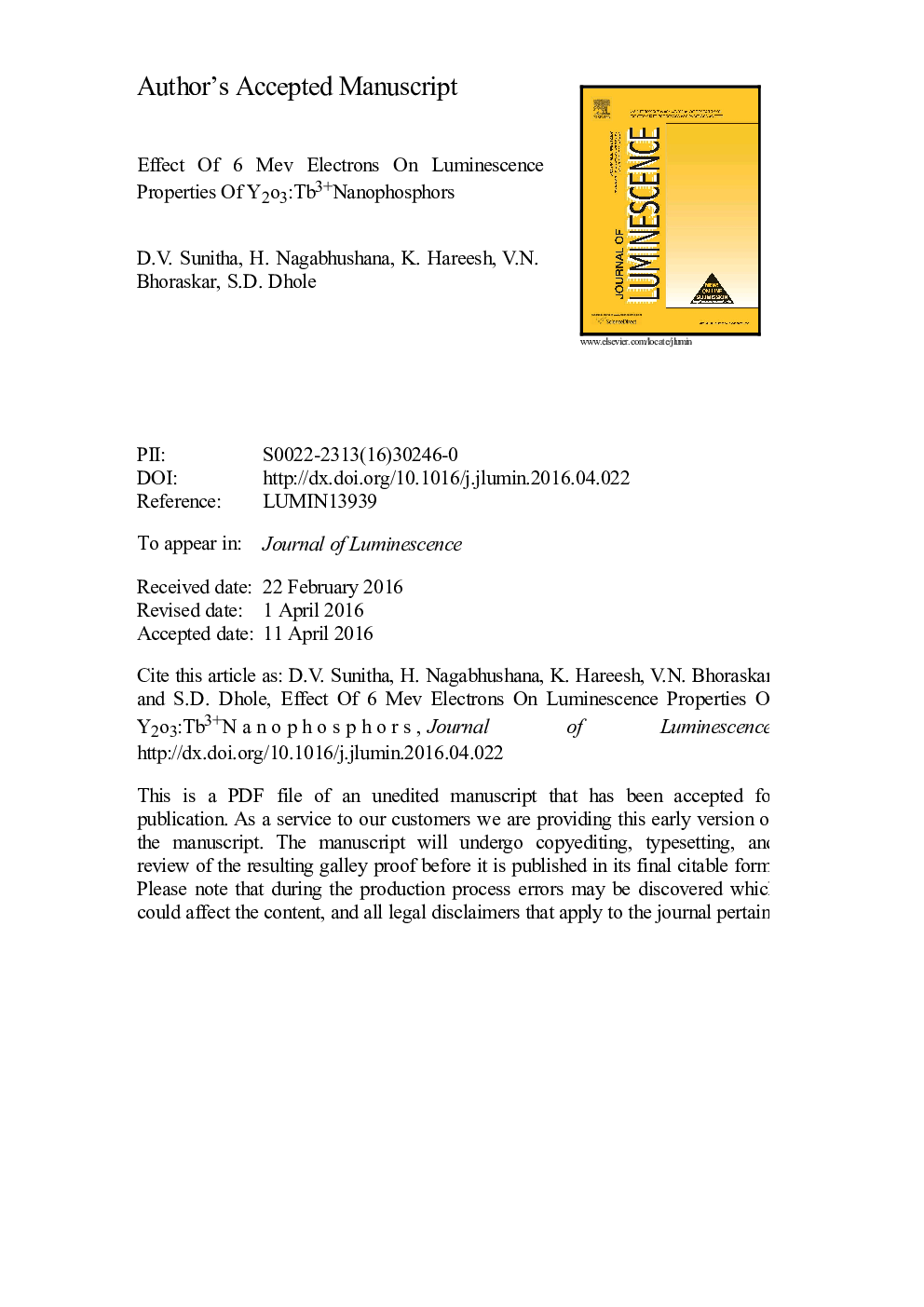| Article ID | Journal | Published Year | Pages | File Type |
|---|---|---|---|---|
| 5398561 | Journal of Luminescence | 2016 | 34 Pages |
Abstract
Y2O3:Tb3+ nanophosphors were synthesized by solution combustion technique and irradiated with 6Â MeV energetic electrons in the fluence range 2-10Ã1013Â eâcmâ2. Powder X-ray diffraction (PXRD) patterns confirm cubic phase of Y2O3. The crystallite size was estimated using Scherrer method and was found to be in the order of ~39Â nm. SEM micrographs revealed the formation of non-uniform spherical shaped particles for higher electron fluence. Photoluminescence spectra (PL) of pristine and Tb3+ doped Y2O3 were recorded in the fluence range 2-10Ã1013Â eâcmâ2. PL intensity was found to increase up to 4Ã1013Â eâcmâ2 and thereafter it decreases with further increase in electron fluence. This may be attributed to lattice disorder produced by dense electronic excitation under electron irradiation. The characteristic emission peaks of Tb3+ were observed at ~ 484-490Â nm (5D4â7F6), 548Â nm (5D4â7F5) and 587Â nm (5D4â7F4) at excited wavelength 397Â nm. Two TL glow peaks were recorded in both pristine and electron irradiated samples indicate that two types of traps were created. The color co-ordinate values (x, y) were located in the green region of the CIE diagram suggests that electron irradiated Y2O3:Tb3+ phosphor could be used in white LEDs.
Related Topics
Physical Sciences and Engineering
Chemistry
Physical and Theoretical Chemistry
Authors
D.V. Sunitha, H. Nagabhushana, K. Hareesh, V.N. Bhoraskar, S.D. Dhole,
